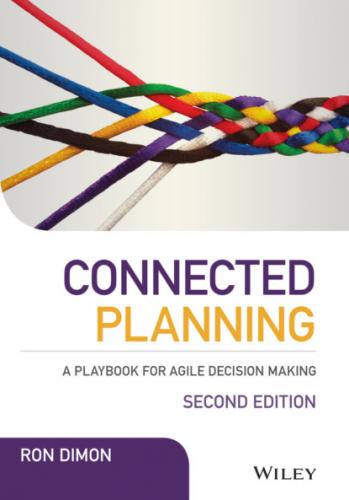Making it a closed-loop process, not fragmented silos and initiatives
Encompassing all areas of the business including Sales and Marketing, Operations, and Development, not exclusive to Finance
Including cognitive and predictive analytics, not just Financial Planning and Reporting
Using it as a platform for continuous improvement, better transparency, collaboration, and what author Daniel Pink says truly motivates us: Autonomy, Mastery, and Purpose1
Note
1 1. Daniel H. Pink, Drive: The Surprising Truth About What Motivates Us (Riverhead Press, 2009).
ACKNOWLEDGMENTS
To my friend Simon Tucker from whom I have learned much and shared many adventures and laughs. Much of the content for this book was formed and validated while working with Simon on myriad clients.
Thanks to Dr. Christopher Neck and Gebhard Rainer (writer of the Foreword in the first edition of this book) for their forewords.
To those who encouraged and supported me in writing this book: Rick Cadman, Dawna MacLean, Tony Mayo, Rohit Millstein, Marty Kaplan, and Bonny Smith.
To my early mentors from Deloitte in Toronto: John Gambles, P. Howard Lyons, Jim Youldon, and Denman Lawrenson and to Alan Slaight for letting me work on his book on Stewart James (Stewart James in Print: The First Fifty Years [Jogestja, 1989]).
To friends and colleagues who reviewed the content, gave me feedback, and helped improve the overall quality of the book, especially Shawn Frost and Fred Sandsmark.
To my editors at John Wiley & Sons: Sheck Cho and Susan Cerra, with much gratitude for their vision and especially for their patience.
To countless clients through 30 years of consulting who taught me their businesses and allowed me to contribute to their success.
Also to Gord Downie, Kevin Hunter, Brian Ginsberg, Bill Fowkes, Carl Tsenis, Corrado Fermo, Dick Antalek, Barbara Paige Kaplan, Madelyn Reid, Charlotte Reid, Patricia Sagara, Ed Majors, Mark Macaluso, Grace Stubberfield, Roland Edwards, and to my children, Harrison Dimon, Heather St. Hilaire, Ruth Dimon, and Oliver Peregrin.
A special thank-you to Tristan Gaynor, George Heiler, Kevin Murphy, and Dave McLurg at Anavate Partners for helping complete this book.
And finally, to my wife and illustrator, Meredith Dimon, thank you for your love, encouragement, and inspiration every day.
Ron Dimon
Santa Fe, NM
April 2021
CHAPTER 1 What's Broken and What's Possible?
“Finding what's wrong and fixing it” versus “seeing what's possible and going for it” give two very different lives.
—TONY MAYO
We are in the middle of an information deluge and an insight glut.1
Our systems, processes, and information are still struggling to escape silos when the economy is crying out for collaboration, efficiency, and better results.
Folks are constantly reinventing the wheel at work and some lament “if only people in our company knew what everyone in our company knows!”2 Many companies can barely agree on the definition of a customer, an employee, or sales figures, let alone agree on how to improve them.
With all this technology and information at our fingertips, we are still making decisions in the dark and relying on our best guesses.
Certainly, some organizations are doing better than others when it comes to closed-loop, fact-based decision-making, but the opportunity to take advantage of all this data we have is barely being exploited.
Strategy-Execution Gap
What is it that thwarts a rigorous process of sustainably executing an organization's strategy? As shown in Figure 1.1, some of the barriers include those capabilities that are the responsibility of managers and leaders in the organization.
In March 2010, Harvard Business Review (HBR) surveyed 1,075 HBR readers about strategy and execution in their organizations.3 Only 37% said their companies are “very good” or “excellent” at execution.
Figure 1.1 Barriers in the Strategy-Execution Gap
The HBR survey found that the top barriers to strategy-execution were:
Making the strategy meaningful to frontline employees
Poor communication of strategy
Lack of accountability
Lack of clear and decisive leadership
Too much focus on short-term results
Everyone too busy/not enough resources
Resistance to change
Strategy goals remain vague and pointless:Leadership actions inconsistent with strategyInability to measure impactBusiness units with competing agendasToo much uncertainty
In my consulting work, and being an employee for small, medium, and large organizations, I've seen some of the barriers to effective strategy execution, including:
No vetting of the strategy to see if it's actually doable (do we have the right capital, right products, right markets, right people?), and little debate to refine the strategy.
Low agreement on what the strategy actually is—even among the C-suite executives (it's always a surprise to see this).
Low connection between the strategic financial and operational business models (made in the vetting debate) and budgets, plans, and forecasts.
Low buy-in to the budgets, plans, and forecasts (usually due to management overrides after a bottoms-up exercise), resulting in low buy-in to the strategy from lower levels in the organization.
Low agreement on what the right measures are to see how well we're doing, and no visible connection between those measures and strategic objectives.
Low belief that the numbers seen are accurate (or at least the same version), as well as a lot of manual effort to get at the numbers.
Low understanding of the root causes as to why the company achieves, underachieves, or overachieves results.
Little connection between root-cause analysis and tweaking the strategy (“hey, we are losing money on product X, and it's not a loss-leader, should we be in that business?”).
Low accountability for results. Some organizations don't have targets or owners for their key objectives.
When
